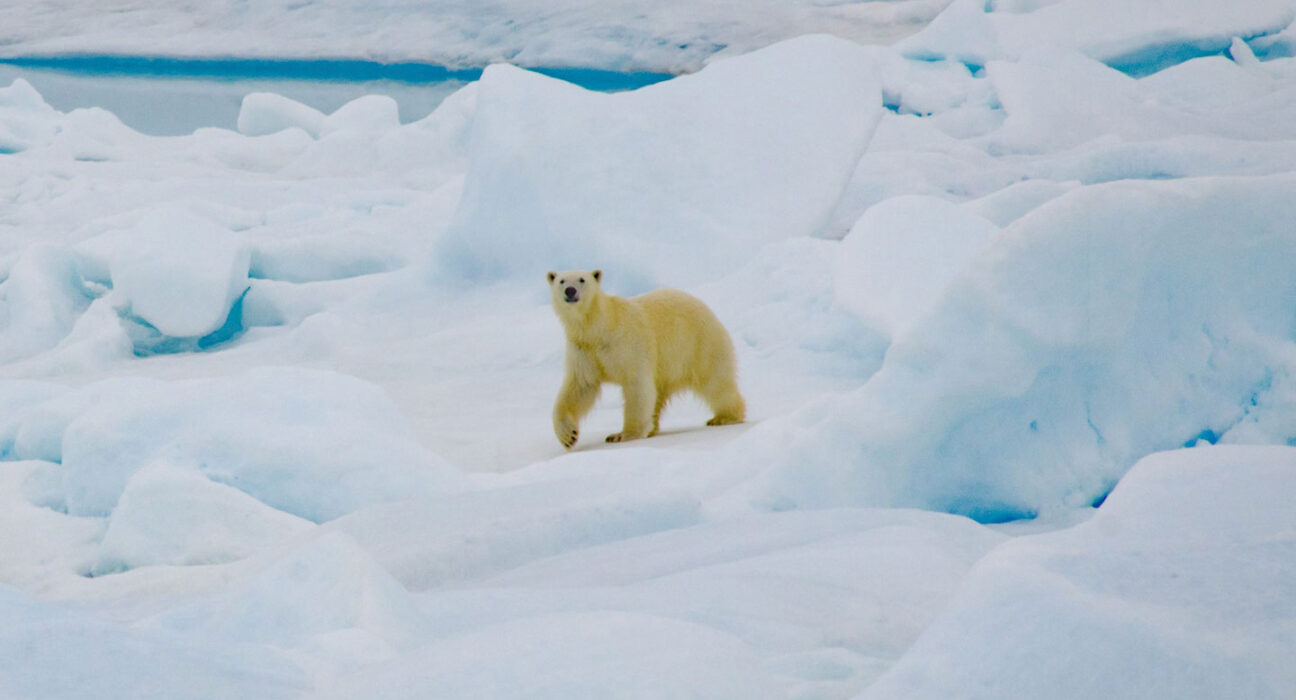Polar bears face mounting challenges in a changing, warming world, mostly related to their waning wintery wonderland habitats. But they may be increasingly infected with germs and parasites, too.
Compared to a few decades ago, polar bears living near Alaska are now more frequently exposed to five different pathogens, researchers report October 23 in PLOS ONE.
“With warming, it just allows pathogens to persist in environments they couldn’t persist in before,” says Karyn Rode, a wildlife biologist at the U.S. Geological Survey’s Alaska Science Center in Anchorage.
But these changes are poorly understood in the Arctic, a region that is morphing rapidly under climate change (SN: 11/15/21). Rode and her colleagues looked to polar bear immune systems for crucial insights.
The Chukchi Sea polar bear population was a perfect fit. These bears, native to the waters between Alaska and Russia, have experienced dramatic losses of sea ice habitat, leading many to spend long periods on land in the summertime. There, they are exposed to humans and their garbage, which are possible sources of pathogens. The Chukchi bears also range farther south than many other polar bears’ populations.
“If there are pathogens moving northward into the range of polar bears, then [the Chukchi Sea] would be a place we would expect to detect that,” Rode says.
The researchers screened blood serum and fecal samples collected from 232 Chukchi bears from 2008 to 2017 for the presence of antibodies against a suite of bacteria, viruses and parasites. If a sample has antibodies aimed at fighting a specific pathogen, it suggests the bear’s immune system has encountered the pathogen at some point. The team then compared that analysis to a similar one of 115 bears from 1987 to 1994.
The proportion of polar bears exposed to the parasite Neosporum caninum and to the bacteria that cause the diseases brucellosis and tularemia has at least doubled since the 1990s, the researchers found. There were also more bears in the more recent cohort with antibodies against canine distemper virus, and the proportion of bears who’d encountered the parasite Toxoplasma gondii increased sevenfold, from about 2 percent to 14 percent.
Comparing ratios of diet-related chemical markers in the bears’ hair, the team found that individual bears varied in what animals they were primarily eating, and that their specific diets were linked to their pathogen exposure.
“[The bears] are probably not the only species that has higher exposure to these pathogens,” Rode says. “It’s within the food chain that this has increased.”
Rode notes that in recent years, ringed seals — one of the polar bears’ key prey species — have died off in large numbers from an unknown disease, helping alert researchers to the need to evaluate pathogens in the predatory polar bears.
Andy Dobson, a wildlife disease ecologist at Princeton University, says the findings are interesting but inconclusive, since the samples were taken from two different geographic locations within the population’s domain.
But the movement of pathogens affects the whole food chain. Some polar bears are eaten by people through subsistence hunting, Rode says, but more work is needed to know if there’s a risk of these pathogens infecting people.
Source link













